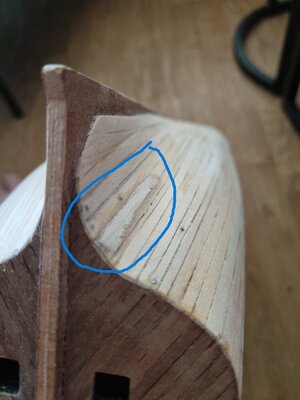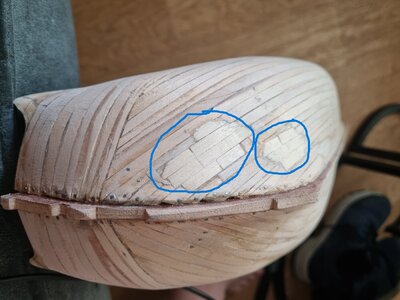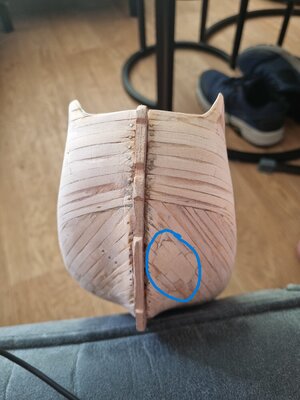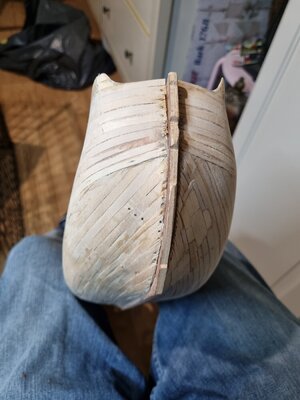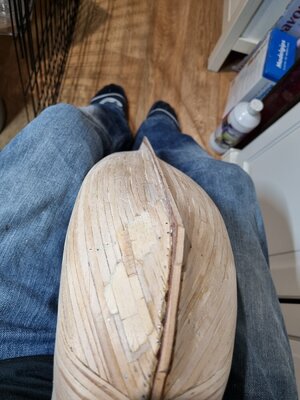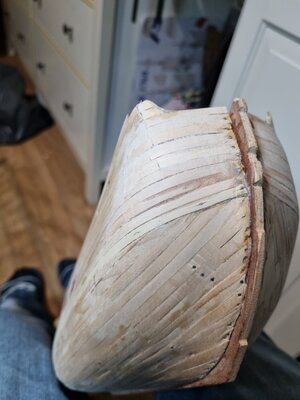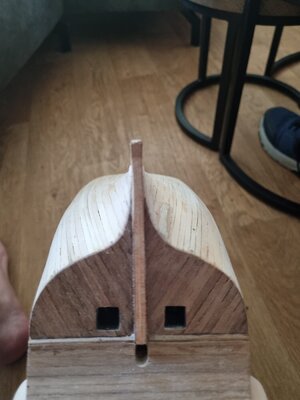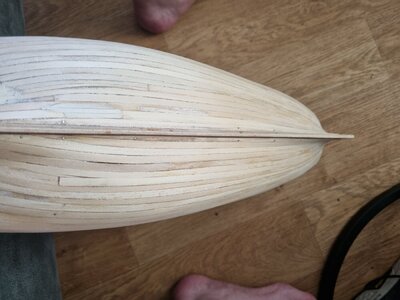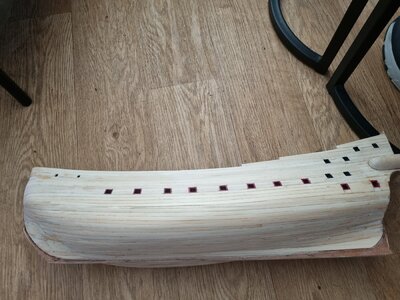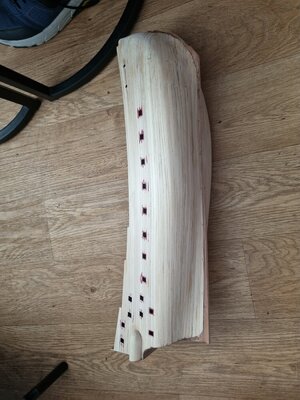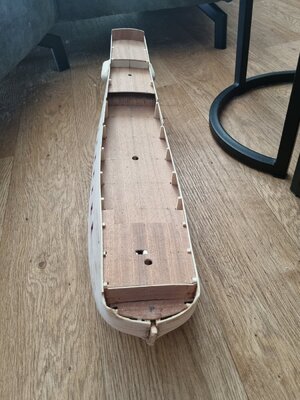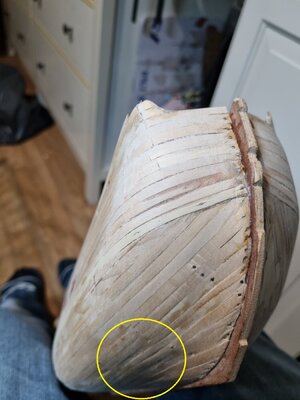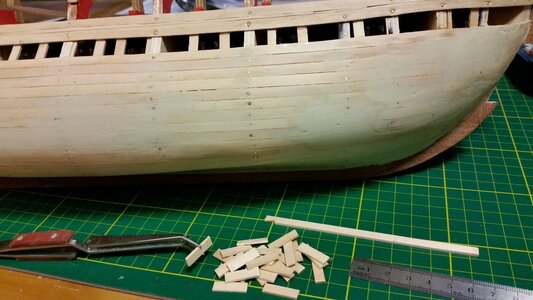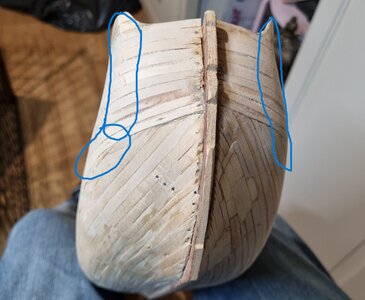Re-plank the whole hull? Oh no. Just the section that has the problem, the area that has the hard bend, and 1-2 frames forward and aft of that. It's a patching process. When you are ready to begin this process, we can step you through removing a section of the hull without disturbing the rest of it, adding balsa blocks between the frames of the problem area, sanding those to shape, and re-planking the area to form a new shape for the bow.Hey Heinrich.
I'm not stopping the log for real it was just a bad joke. I'm just angry about corel for ther bad drawings. I know it's a learning process but taking the hole hull apart and replank the hole ship?
And I know that all of the people on the forum want to help me.
So I'm absolutely not angry about them.
In a couple of weeks I finished the airbrush clinics and can reset my shipbuilders mind. ( it a Christmas present from my best friend who is a artist in airbrushing) Then I can start with a fresch mindset. So the PW has to wait a little while before I smash it against the wall( joke again).
For all of you guys.. thanks for trying to help me.
We understand the disappointment that comes with learning that the instructions have gaps in the process of building. EVERY kit has that problem. It's something no one tells you when you start building wooden model ships. In plastic model ship instructions, you aren't told where and how to use filler to hide seams or use airbrushing in layers to achieve a professional level of color, detail, and weathering. The pitfalls in wooden ship kits are totally different, and act as pit traps for the new builder. One of the greatest purposes of this forum is to help guide builders through the process of learning the techniques not taught in the instructions. All of us here have had to stop a project that has jumped the tracks and rework a part of the ship or rigging. The question becomes, do I have the patience to learn how to back up and rework something? Do I have a strong enough desire to overcome huge setbacks, and recover? If these models were easy in this regard, there would be a lot more of them. Like Heinrich said, the model teaches you more about yourself, your strength of will, and your patience to work through tough problems doing something you have never done before. If you can work through an entire build with devotion to research and problem solving, you will not have a greater fan base than the fellow builders who are here on this forum, because we are all on that same ladder of learning at different levels, all climbing slowly ever upward.





